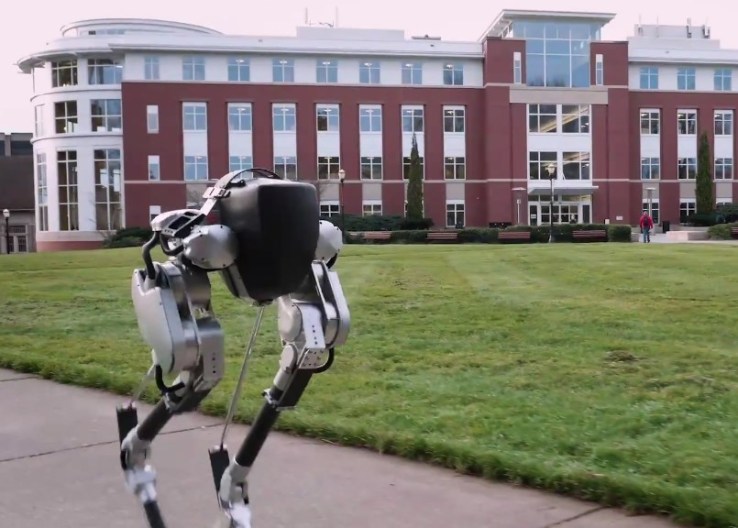

Bipedal robots are one of the most intensely researched areas of mechanical engineering, and while it’s a notoriously difficult problem, there’s no shortage of material from which to draw inspiration. Cassie, a new robot from Agility Robotics, is a great example of that: its stable yet precise gait and was based on that of birds — specifically, ostriches.
Cassie is descended from ATRIAS, another bipedal bot with unique leg motion; but while ATRIAS looks sort of like a naked Dalek, Cassie resembles nothing if not a newborn ED209.
 ATRIAS was built at Oregon State University, which spun off Agility Robotics last year. The basic ideas are similar between the two, but advances in batteries, leg design, and computing make Cassie able to walk with considerably more agility.
ATRIAS was built at Oregon State University, which spun off Agility Robotics last year. The basic ideas are similar between the two, but advances in batteries, leg design, and computing make Cassie able to walk with considerably more agility.
Like ostriches (and humans), Cassie has three degrees of freedom in its hips and flexible, powered ankles, but knees that only flex one way. This creates not only a natural gait, but a way to steer that’s similar to our own. As with ATRIAS, quick and careful placement of the feet makes Cassie resistant to slips, stumbles, and the occasional malicious grad student.
The whole chassis is very lightweight, and is designed to absorb shock in a natural way, as we do when we walk. But it’s also tough enough that it doesn’t need a safety harness in case it falls, like so many other robots. That’s pretty impressive for a robot built from scratch over the last few months.
An efficient, robust, bipedal robot that can go where humans go and doesn’t cost a fortune would be a boon to countless industries, and could also perform dangerous jobs like disaster area reconnaissance or nuclear plant inspection. And if you’re busy, why not send your Cassie to the store?
If Cassie has caught your eye, head over to IEEE Spectrum for more detail, and watch Agility Robotics for more updates.

